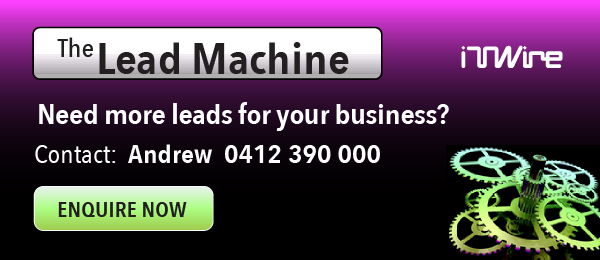Opening with a finance lesson Hurd said, “Macro economics is driving business and IT,” explaining global gross domestic product, or GDP, has experienced five years of around 1.5-2.5% growth as measured by compound annual growth rate, or CAGR. “40% of this is one country, China,” he said, “meaning 60% is outside China, or less than one trillion dollars.”
What this means in practical terms is business-to-business IT growth over five years has been a flat to 1% CAGR rate. “GDP and CAGR are useful to business,” Hurd explains, “because you want to grow faster than just GDP.”
Yet, with very little revenue growth, some companies are squeezing out profits by cutting expenses. Some are going out of business altogether – “BlackBerry, BlockBuster, Borders, Kodak, Sears,” Hurd said.
|
|
“No matter who you work for, your company wants to grow revenue and gain share, spend less, and improve cash flow.”
The key to this, Hurd says, is innovation - in business models, products, services and customer experience. “You need to give a better service than your competitors.”
This is easily said, but not so easily done. Companies face greater pressure today than before. CEO tenure is now averaging only 18 quarters, Hurd states, and in addition to growing revenue and running a company, CEOs need to manage risk. Risk is a serious problem with Equifax’s recent disaster being a sober example.
Technology innovation and consumer adoption is increasing faster than IT can keep up, Hurd states. Established companies average 20 year-old systems and applications with 80% of budget being spent on maintenance.
Hungry for your business, disruptors exist on the doorstep. Hurd cited numerous examples: Lyft is disrupting the auto industry and car ownership; Bloom energy is disrupting utilities and energy; Stripe is disrupting online payments, software and finance; Warby Parker is disrupting eyewear retailing and e-commerce; and House is disrupting home remodelling and contracting.
The challenge for business is to compete with disruptors with a diminishing innovation budget. “If you need to cut costs, are you going to cut the order system or innovation?” Hurd asks. “If the board says we don’t want to be hacked and the CIO says we need to spend more on security, it comes out of the innovation budget.”
Yet, “disruptors say I’m just going to take on your market and not take on all the legacy. Now you have to compete with them with all this legacy. It’s really hard work.”
The next big challenge, Hurd says, is security. Companies must be ready. “The next event could be bigger than you think,” he said. “The average patch takes about one year, on average, before it is integrated into systems. The Equifax patch was just a couple of months tardy. Readiness is going to be a bigger issue than ever, ever before.”
Ironically, Hurd points to Silicon Valley as a large contributor to the problems business faces in competing with disruptors and managing security. “Silicon Valley has fantastic engineers building pieces, then sold these pieces to customers and told them to put all the complexity together into what becomes systems, applications and infrastructure.”
“That complexity has driven to this very difficult environment to maintain, upgrade, and innovate. Silicon Valley hasn’t made things easy; it’s said to the customer you put all this together.”
Here is where the cloud comes in; this is the solution, Hurd says, listing his what and why of the cloud:
The cloud is scaled, optimised and secured stacks. It’s built on standards. The burden is on industry, and not the customer. It offers significantly lower TCO, it’s innovative, more secure, and emerging technologies are engineered into applications.
“The question is not if, but when,” Hurd says.
“You get innovation straight away from the industry. There’s very little incremental cost if any. The burden of patching is on the vendor, not the customer.”
Importantly, Hurd says, “it’s more secure. We deal with very mature, sophisticated hackers every day. In the end because of all the technology, all the capability, you’re going to be more secure, not less secure.”
Hurd lists artificial intelligence (AI) as an example of future innovation. “You hear people talk about AI as a separate application, but you’re going to see AI built directly into all these use cases, directly into the customer retention, as opposed to exporting data to an AI solution.”
Hurd offered his predictions, that by 2025:
- 80% of production apps will be in the cloud
- Two SaaS suite providers will have 80% market share
- The number of corporate-owned data centres will have decreased by 80%
- 80% of IT budgets will be spent on cloud services
- 80% of IT budgets will be spent on business innovation, and only 20% on system maintenance
- All enterprise data will be stored in the cloud
- 100% of application development and testing will be in the cloud
- Enterprise clouds will be the most secure place for IT processing
This is why you need to move to the cloud, Hurd says. It’s more secure, it allows you to innovate, it frees your people and budget to focus on innovation over maintenance, it delivers newer technology and really, “it’s not if, it’s when,” he says.
With this vision of the future in mind, Hurd stated Oracle’s cloud strategy is to build the applications, platform and infrastructure to enable any business to shift to, or start in, the cloud.
“Oracle now has the most complete suite of SaaS applications, the most complete suite of PaaS services, and the next generation of IaaS,” Hurd said.
“Companies are moving quickly. Don’t get left behind.”
The writer is attending Oracle Open World 2017 as a guest of the company.






































